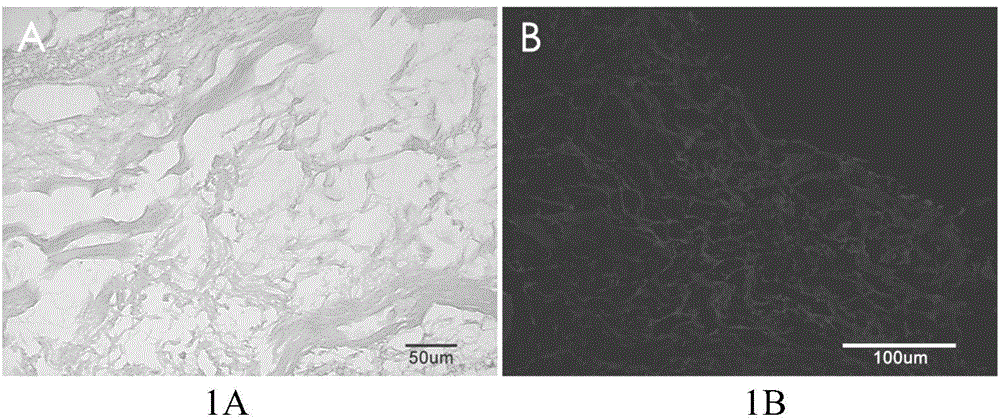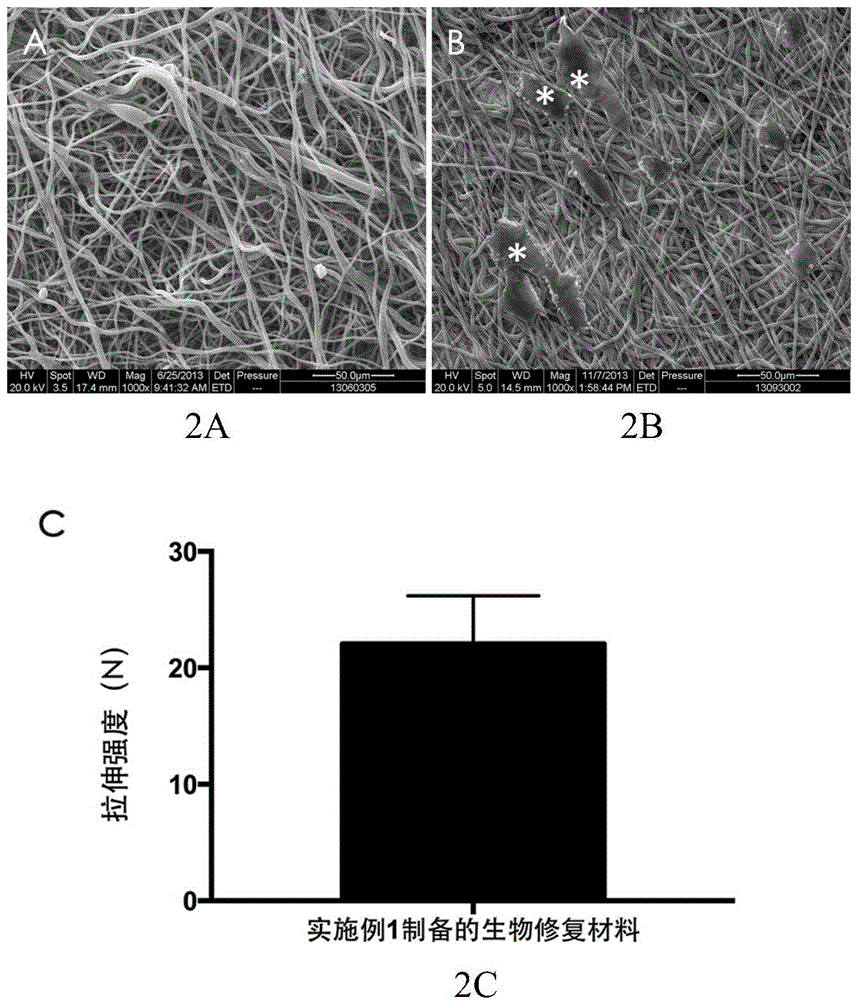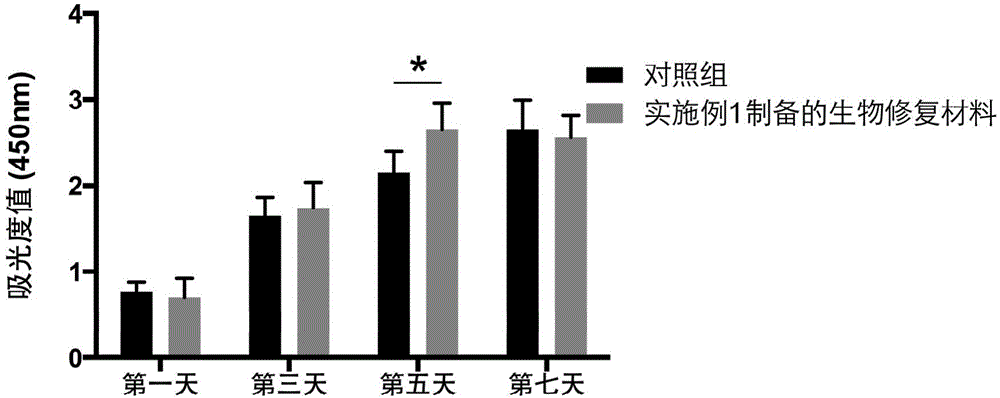Biological repairing material for abdominal wall defect and preparation method of biological repairing material
A bio-repair, abdominal wall technology, applied in the field of biomedical engineering, can solve the problems of insufficient remodeling of the host's new autologous tissue, weak abdominal wall at the defect, poor mechanical strength of biological patches, etc., and achieve good biocompatibility and biomechanics. performance effect
- Summary
- Abstract
- Description
- Claims
- Application Information
AI Technical Summary
Problems solved by technology
Method used
Image
Examples
Embodiment 1
[0032] Embodiment 1 preparation test example
[0033] (1) Pre-treatment: Donor pigs are taken from local slaughterhouses, aged 25-30 weeks, weighing 30-40kg, male or female. After euthanasia with anesthesia, a median incision from the xiphoid process to the lower abdomen was selected, and the subcutaneous tissue and superficial fascia were free to expose the rectus abdominis tissue. Muscle, rinse repeatedly with deionized water at 0-8°C or buffered saline solution (PBS) with a pH value of about 7.4 to remove blood clots on the surface, remove surface fat tissue and fascia tissue under sterile conditions, and cut into 2×2cm 2 For large and small flakes, continue to rinse with deionized water or buffered saline solution (PBS) with a pH value of about 7.4.
[0034] (2) Decellularization treatment: In this part, freeze-thaw method, alkyl glycoside and nuclease solution are combined for decellularization treatment. The steps are as follows. The above-mentioned rectus abdominis ti...
Embodiment 2
[0037] Example 2 In vitro test
[0038] (1) Determination of decellularization degree:
[0039] Hematoxylin-eosin staining (HE staining) of skeletal muscle acellular matrix material embedded in paraffin (attached figure 1 A) and 4,6-diamidino-2-phenylindole fluorescent staining (DAPI staining) (attached figure 1 As shown in B), it is confirmed that there is no obvious cell nucleus residue inside the material, and the protein collagen fibers are arranged in an irregular shape.
[0040] (2) Determination of fiber structure and mechanical properties:
[0041] The skeletal muscle acellular matrix / polycaprolactone blended electrospun fiber membrane prepared in Example 1 was detected by scanning electron microscopy (SEM), which showed that the fiber structure of the material was arranged in a cord-like disorder, and the fiber diameter was several Between hundreds of nanometers and several microns (with figure 2 shown in A).
[0042] Rat fibroblasts were planted on the skeletal...
Embodiment 3
[0046] Example 3 In vivo experiments verify the application of composite nanofibrous membranes in abdominal wall defects
[0047] In order to check the specific effect of the polycaprolactone / skeletal muscle acellular matrix fiber nanofilm prepared in Example 1, we used it to repair the rat full-thickness abdominal wall defect model, and the detailed steps were as follows: SD female rats (12 Only) given 10% chloral hydrate intraperitoneal injection anesthesia (0.4ml / 100g), routine abdominal skin preparation, sterilized drape. A longitudinal incision was made in the center of the abdomen, about 5 cm long, and the subcutaneous tissue was cut open. The subcutaneous tissue was bluntly separated to both sides along the incision. A full-thickness rat abdominal wall defect model of 2×2 cm2 was repaired with the fibrous nanomembrane scaffold prepared in Example 1, sutured with 4-0 silk interrupted sutures, and the skin and subcutaneous tissue were sutured with 3-0 silk interrupted sut...
PUM
| Property | Measurement | Unit |
|---|---|---|
| concentration | aaaaa | aaaaa |
Abstract
Description
Claims
Application Information
 Login to View More
Login to View More - R&D
- Intellectual Property
- Life Sciences
- Materials
- Tech Scout
- Unparalleled Data Quality
- Higher Quality Content
- 60% Fewer Hallucinations
Browse by: Latest US Patents, China's latest patents, Technical Efficacy Thesaurus, Application Domain, Technology Topic, Popular Technical Reports.
© 2025 PatSnap. All rights reserved.Legal|Privacy policy|Modern Slavery Act Transparency Statement|Sitemap|About US| Contact US: help@patsnap.com



